India — China: Is War Possible in the Future?
The armies of the world’s two most populous nations are locked in a tense face-off high in the Himalayas

The armies of the world’s two most populous nations are locked in a tense face-off high in the Himalayas, which has the potential to escalate as they seek to further their strategic goals. The Indian Army and the Chinese military are moving heavy equipment and weaponry including artillery and combat vehicles to their rear bases close to the disputed areas in eastern Ladakh.

Satellite images show massive construction activity including the addition of a second taxi-track to position helicopters or combat aircraft, at a high altitude Chinese airbase Ngari Gunsa which is located just 200 kilometres away from the Pangong Lake.
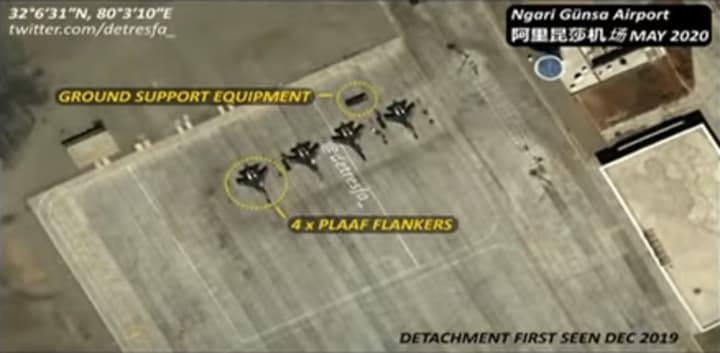
This image shows a close-up of the main taxi track at the airport with a line-up of four fighter jets believed to be either J-11 or J-16 fighters of the Chinese People’s Liberation Army Air Force.
Countries around the world have increased their spending on building up the defence in the last five years and it has now reached a whopping $1.9 trillion in 2019, with both China and India among the top 5 investors in the world. China makes its weapon and armed drones by itself. In the beginning, China relied heavily on Russia, Ukraine, and France for its weapons. However, today China still buys its high-tech weapons from Russia. At the moment, it is the world’s biggest arms seller and exporter.
On the other hand, India has the resources to make its weapons but the country would rather buy them instead. India is the world’s second-largest importer of weapons after Saudi Arabia. Russia accounts for about 58% of India’s imports and it’s expected that the Russian share in the Indian imports will go up in the next 5-year period.
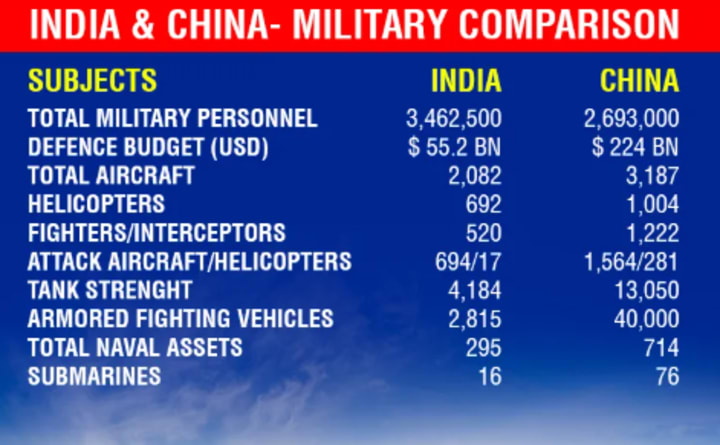
In terms of numbers, it may sound that China is more powerful than India. But the situation at the ground level is different from the numbers. We need to have a major perspective of Geographical areas where most of the war will be fought. India is one of the countries with large amounts of the overseas base, China also has a considerable amount of overseas base.
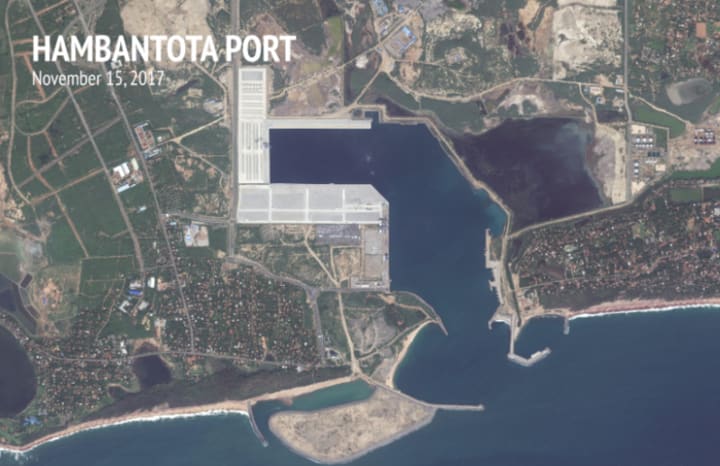
Sri Lanka’s new government in 2015 struggled to make payments on the debt Mr.Rajapaksa (Former President) had taken on to develop a port in his hometown, Hambantota. Under heavy pressure and after months of negotiations with the Chinese, the Srilankan government handed over the port and 15,000 acres of land around it to the Chinese. Hambantota might also be a good place for a Chinese naval base, as part of a Chinese ‘String of Pearls’ (a grand Chinese plan to surround India in the Indian Ocean).
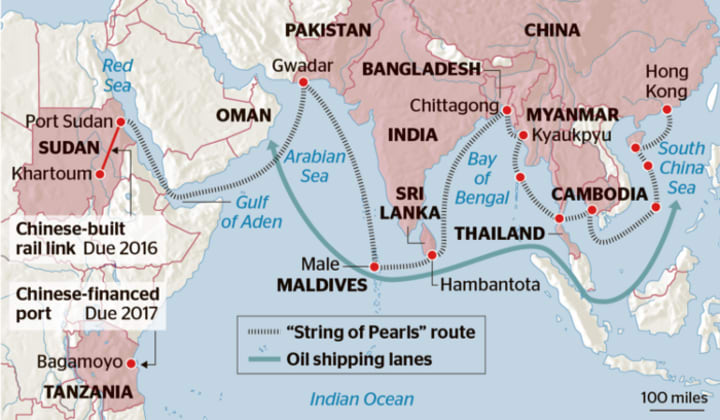
An airport was constructed in Hambantota which was also a great loss for the Srilankan government. India spent around US$300 million buying the airport to block a Chinese naval base. This airport gives India considerable control over how the Chinese controlled port is used.
Apart from Hambantota, to defend the attack posed by Chinese, India has a coast surveillance radar system deployed and maintained by India in Seychelles, Mauritius, Maldives and Madagascar.
Vietnam has invited India to maintain hold of its Naval presence in the South China Sea region and has also granted allowance to India for maintaining its Air and Naval Base at the Cam Ranh Bay, in Vietnam. India also operates naval bases in Indonesia and Reunion islands.
India has maintained a long tie with its Himalayan neighbour Nepal. “India claims any attack on Nepal will be considered as an attack on India.” India has also invested in Chabahar port in Iran. During war times this port might be of immense help to India.
On the other hand, China has a significant military presence around India in countries like Afghanistan, Cambodia, Myanmar to defend attacks posed by India.
According to numbers, the Chinese military might be having a positive hold over India, but India has geographical advantages. Most of the Chinese military bases are situated on the Eastern borders of the country and only a countable amount of bases are situated at the border near the Indian subcontinent.

In the case of India, as their borders are always vulnerable in the North with one side Pakistan and the other side China, lots of military personnel and bases are situated near the borders. In the case of the Chinese attack, the forces on the Pakistan border might also be brought to the Chinese border.
To launch any air campaign, fighter aircraft must be deployed close to the border, roughly about 250 km from the border of the enemy nation. Against India, China will have to deploy its fighter aircraft in Tibet and adjacent airfields in Xinjiang.
Since most of the fighter aircraft of the People’s Liberation Army Air force (PLAAF) is being deployed on its eastern seaboard, it is almost impossible for the PLAAF to deploy most of its aircraft near the Indian border because of its limited number of airfields in Tibet and also the fact that it will make its Eastern borders vulnerable for an attack from its enemies.

If an aircraft is taken off from an airfield there must also be another mutually supporting airfield close to it within a distance of 200km. This will be very useful in case of damage or for any other technical reasons.
The distance from Hotan, to Kashgar, is 440 km and from Hotan, to Gargunza it is 530 km. If Hotan is bombed then Kashgar will be at a distance of nearly 1000 km from Gargunza. Therefore at the time of the attack, India will be gaining dominance over the region.
In any airfield, when an aircraft is parked there should be blast protected shelters (BPS). BPS is a vital form of protection from nuclear attack. China has BPS in airfields near the Russian border but doesn’t have BPS in airfields near the Indian border. This is an important limitation for them.
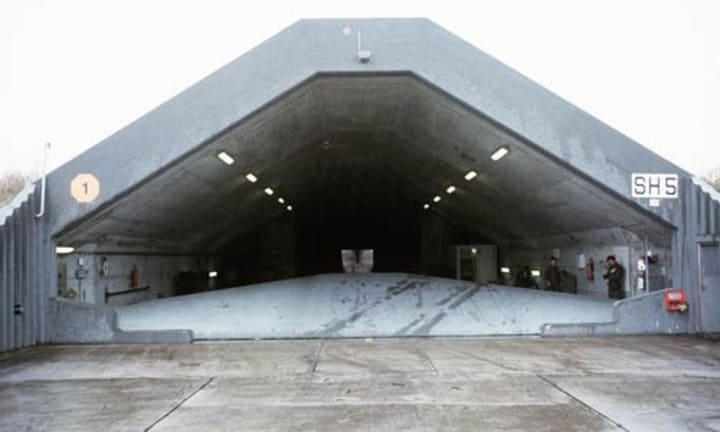
India already has BPS in airfields bordering Pakistan which were all constructed after the 1965 India — Pakistan war during which, nearly 60% of India’s air losses were of fighters that were on the ground. It was only in 2019, India started constructing BPS in airfields near the Chinese border since they did not have protective shelters to keep Sukhoi Su-30MKI (a twinjet multirole air superiority fighter).
At the time of the attack, the Indian side will be gaining dominance at first. The Indian air force (IAF) will be able to damage military installations by the Chinese near the border and also target some of the airfields so that there will be no mutually supportive airfields which will make them suffer seriously and will be in an unable position to attack India.

During this time China will be able to bring its troops and equipment from its eastern borders towards India. India will be in an easy position to immediately launch its troops from the Pakistan Border towards China since the distance between the borders is not very large. Indian personnel on both the borders are trained in this type of terrain while the Chinese personnel from its far Eastern borders are not used to this type of climate and terrain.
IAF will be able to launch attacks from high altitudes. PLAAF will also be able to launch attacks with its existing aircraft near the Indian border but difficult with the equipment brought from the East.
China will be in a dominant position if they launch an attack near Arunachal Pradesh with its Eastern troops and will be able to extend its border but, at the same time it will also lose its land in Tibet as the IAF will advance.
Chinese weapons are being manufactured within its territory and most of its strength is unknown but some of the PLAAF’s jets such as J-11 and J-16 jets are derived from Russian Su-27 and Su-30 fighters respectively.

China will also start using its navy for its aid. Though the Chinese navy is stronger than the Indian navy they have to face disturbances in the South China Sea from Indian allies and Indian bases in overseas countries.
India will be in a position to stop the Chinese trade with their military bases, as most of the Chinese trade happens through the Indian Ocean. China will try to attack India from Hambantota but the IAF base in Hambantota will fight against the Chinese base.
Since both are nuclear-armed nations it is expected that neither country will use nuclear weapons.

China would get help from Pakistan, which will be able to attack India’s western borders. India will suffer serious damages and get help from its Ally Iran. If this is so the war keeps ongoing. But, these are not expected.
If a war emerges both the sides will suffer serious damages and so both the countries will try to neglect such a war. Therefore there is no expectation of war in the future between these two emerging economies. But, standoff and border tensions are expected to continue in the coming years.






Comments
There are no comments for this story
Be the first to respond and start the conversation.